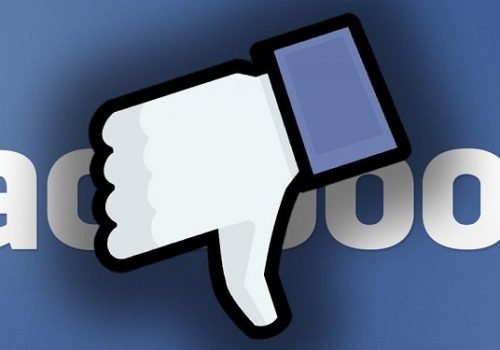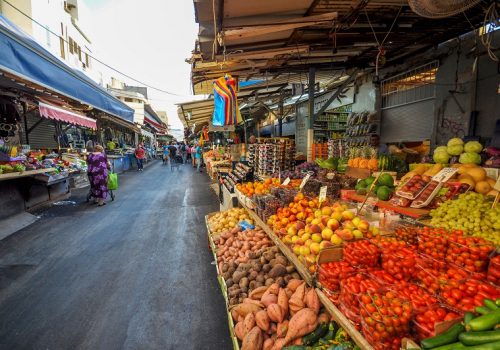Pretty much all traffic networks are using the auction model, when selling their traffic. Of course, you can also make FLAT deals with them, especially when going for BIG volume, but that’s not an option for new affiliates at all.
On top of that, with offers going down anytime, caps getting filled at random times of the day and a lot of other factors you cannot influence … I’m not such a big fan of Flat deals anymore, because you can’t stop them at will. These days, I buy bulk of my traffic via bidding auctions.
HOW TO APPROACH BIDDING?
There is a ton of different ways you can approach bidding, everyone will develop their own strategy at some point. Some people love to mess with bids all the time, some set a low one and wait for the outcome, some love to sit in the middle, some at the top … but I don’t want to write a summary of all the possible bidding models here.
What I’m about to do, is to compare two “extremes” in this article – bidding VERY LOW versus bidding VERY HIGH. Both of them can work, but both need a different approach.
Before we can move further, we need to understand the ecosystem, so let’s take a closer look at how the bidding model works actually.
WHAT DO TRAFFIC NETWORKS WANT?

Traffic networks have basically just one thing in mind : PROFITS! They want to sell the traffic for as high prices as possible. The more they can gross, the more profits they can keep and the more they can also pay their publishers. Which means, that they will stay with them instead of moving to some other traffic network – what publishers love to do 🙂
In order to achieve this, they need to attract as much media buyers, people like me and you, as possible. That’s why they need to offer all the tools we want, especially when it comes to targeting. They also need a solid team, to watch their platform, serve the media buyers, approve campaigns etc …
WHAT DO MEDIA BUYERS WANT?
Quite obviously, we want as much traffic as possible, as targeted as possible and for as low price as possible 🙂 Quite a clash between what we want and what the networks want.
In order to keep up with the high prices they want to charge us, we can at least use the deep targeting options, tight capping etc … all the basic stuff we use, when optimizing campaigns. We don’t want to buy all the traffic they offer, we just want that part that converts.
THIS IS ALL CLEAR SO WHY DO I MENTION IT?
But where am I going with all of this?
Did you ever think about how much traffic the networks offer and how much the media buyers actually buy? Traffic networks do whatever they can to sell all they have, but still, they are pretty much never able to sell all the traffic through the bidding platform. There is always some traffic left over, thousands and thousands of impressions that networks are not able to sell to any bidder – it’s called remnant traffic.
So how is it possible that no matter how many times you refresh a site, there are always some banners served?
They have deals for this remnant traffic in place, so whatever they can’t sell in bidding goes to “backup” campaigns – these can be direct buyers of remnant traffic, internal campaigns or a special deal with advertisers who own the offers directly.
These deals are one of the biggest reasons for the existence of minimum bid levels. They (networks) know how much they can make with these backup deals, so if you want that traffic instead, you gotta bid higher than that.
I’m explaining this so detailed, to make sure you understand that even traffic that sells at the minimum bid, or below it, has some value and why it is so.
SO WHAT APPROACH SHOULD YOU CHOOSE, BID HIGH OR LOW?

The market itself will tell you what to do in many cases. You want to make money, right? So the amount you are able to bid is in direct correlation with how much you are making from that traffic. The more profitable market/niche you are in, the more you can bid.
HIGH bids will generally mean higher quality traffic and there are several reasons for this :
– when users enter a site, they are more likely to click on an AD, because it’s new to them, they are not so blind to banners yet. 10 impressions later, they will ignore the banners so the CTR (Click Through Rate) will be low. Higher bidders are served first, so the higher you bid, the sooner your ADs will be shown to the user.
– this is all about auction, remember? Media buyers know what spots/sites have better traffic and they will bid higher on those. Want that traffic too? Bid high and win the auction!
– the point above also has to do with deep targeting. When selecting specific targets, you can expect to meet high bidders with similar settings, so in order to still get that traffic you will have to bid high. Deep targeting usually equals to good quality traffic.
– higher CTR – this is connected with the first point but also with the quality of your creatives. In case you are a banner ninja, definitely bid higher and enjoy cheap clicks that others cannot get with their poor creatives.
Bidding HIGH also means volume, this is #1 reason for bidding high maybe – when something works, we all try to bid higher to get more volume going.
LOW bids now : Going by the above mentioned logic, bidding LOW should mean low or at least lower quality. While this is usually true, bidding low doesn’t automatically mean you would receive shitty traffic only. Let me explain why it is so.
WHY LOW BIDS CAN WORK TOO

We need to understand what kind of traffic is there left for grabs for CHEAP. I’d say we can split this left-over traffic into 2 main groups :
1. Shitty traffic that nobody wants to buy : Placements on fake sites full of bots, wrongly positioned banner spots with lousy CTR, spots with too high % of unintentional clicks etc … there is a dozen reasons for us to stay away from some spots/placements and block them in any campaign that we run. Obviously, since nobody is bidding on these, this crap is available for cheap – minimum bid usually.
2. Good traffic, that there were not enough buyers for : Those who bid HIGH need to implement some measures to make sure they are still able to profit, even with super high bids. The most important measure for us here, is the daily impressions CAP. So how many times you want to show your banners to the same user.
Daily cap of 1 impressions will produce the highest quality of traffic. But t he higher the cap is, the lower the CTR and the lower the overall quality of the traffic will be. That’s why HIGH bidders usually utilize tight caps of 1-3.
This means, that even thou there can be several high bidders fighting for some spot, their tight caps will cause some of the traffic to remain unsold. And that’s where you can grab it for cheap.
HOW TO GET QUALITY TRAFFIC FOR CHEAP?

Now you know why there is some good traffic available for cheap, but how can you actually buy it, without getting all that crap too? You will always get some traffic, even when bidding low, but you need just the good one – otherwise you could make the false assumption that it all sucks because of the low bid.
CTR will come in handy in this case, both banner CTR and LP (landing page) CTR. What we are looking for is very LOW and unrealistically HIGH CTR rate.
BOT/fake placements will very often be responsible for “too high” banner CTR and poorly placed banners, on the other hand, will have “very low” banner CTRs. The same goes for Landing Page CTR, unrealistically high just as super low LP CTR is a signal to cut that placement.
When using the minimum bidding, you need to actively monitor the campaign and quickly pause the placements that fit the above mentioned. The rest will be solid traffic that you can work with, from the most part.
WHEN IS IT BETTER TO BID HIGH AND WHEN LOW?
I wouldn’t say there are any universal rules, but I can tell you what I do. Whenever I have a good offer or an optimized campaign, I try to get as much volume as possible and bank hard on it. So I bid as high as possible.
But some campaigns just don’t perform good enough for this. So in order to get at least some profits with them, I lower the bid as much as possible and try to pick some of this good left over traffic.
It is also a strategy that I’m using when testing something new : product, source or both. By bidding low, I’m not burning so much on testing. The volume is usually lower, but once I block the poor placements I can at least optimize the campaigns and then decide what to do next.
Thanks for reading!
[grwebform url=”https://app.getresponse.com/view_webform_v2.js?u=Sym6E&webforms_id=8162402″ css=”on” center=”off” center_margin=”200″/]







2 comments
Hi, good article, i used to think that from start i should use high bids to test new offers on pop traffic. Could you please give some examples of what LOW bids are you using for 3G and WIFI pop traffic for some regions (europe/asia/…) when you start a new campaign?
High bids usually mean higher quality traffic, but also higher competition … you could easily get burned when shooting for the top straight away. Even low bids should give you traffic that is able to convert… and as soon a you have at least a decent funnel, you can increase the bids and get more volume.
I’m sorry but it’s not possible to tell you what is a low bid to use, it depends on the GEO, source, competition … there is a trick you can use though. Bid the minimum that the source allows, see if it send any traffic at all. Then increase it in small steps until you see a bigger increase in traffic … that is a good spot for initial testing.